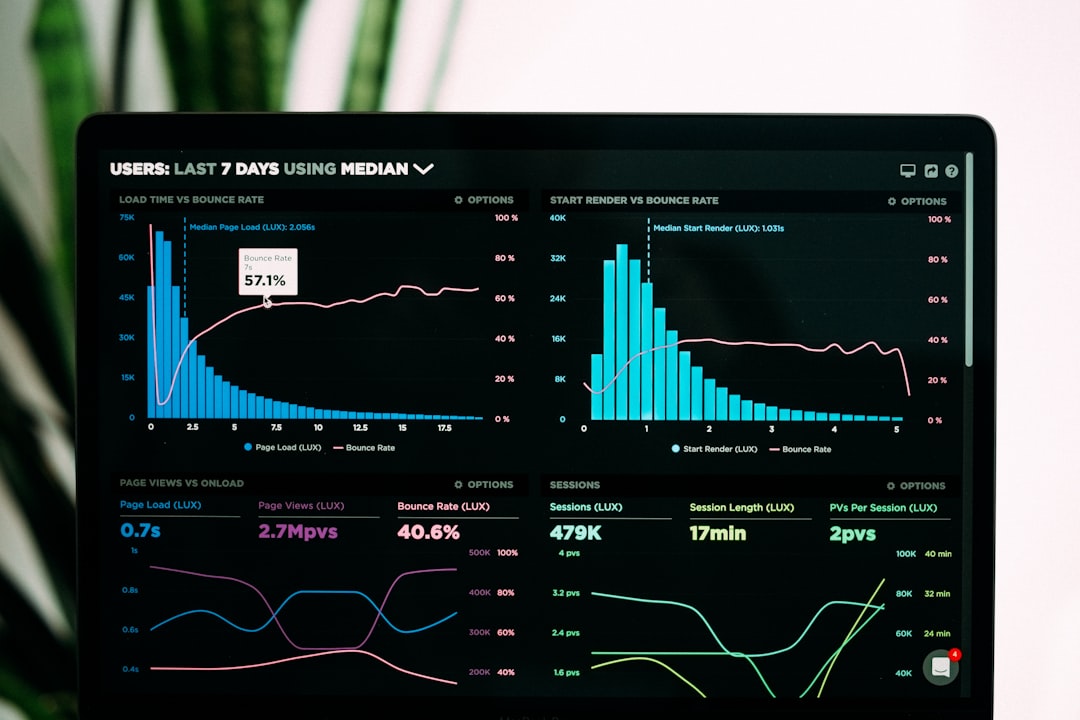Unlock encrypted content
Please enter your SSCE key to initiate on-the-fly decryption.
Decryption key: (Click cancel if you don't have the key)
Copied link to clipboard.
This feature is unavailable for free accounts. Upgrade now and enjoy all Premium benefits.
Go Premium!
This feature is unavailable for free accounts. Upgrade now and enjoy all Premium benefits.
Go Premium!
Please open this page in browser ( Google Chrome or Safari ) to use this feature.
Open In Browser
The Future of Document Management: Exploring Cognitive Robotics, Blockchain, and Secure Cloud Storage.
Random related video for this blog.
Copied share link to clipboard.
In today's digital age, efficient document management is crucial for businesses and individuals alike.
Revolutionizing File Management
The landscape of document management is undergoing a transformative shift, propelled by advancements in cognitive robotics and artificial intelligence (AI). These technologies are not merely buzzwords; they represent a profound change in how we manage, copy, and move files. Cognitive robotics, which combines AI with robotics, enables systems to understand and automate complex tasks, significantly improving efficiency in document handling. For instance, organizations can deploy robotic process automation (RPA) to streamline workflows, reducing the time spent on mundane tasks like data entry and file sorting. Consider a legal firm that deals with thousands of documents daily. Implementing cognitive robotics allows for automatic classification and tagging of legal documents, drastically minimizing human error and ensuring that files are easily retrievable. This not only enhances productivity but also allows legal professionals to focus on higher-value tasks, such as client interaction and case strategy. Furthermore, as cognitive systems learn from interactions, they continually improve their performance, making document management more intuitive over time. However, the integration of cognitive robotics into document management is not without challenges. Organizations must address issues such as data privacy and security, especially when sensitive information is involved. This is where secure cloud storage services come into play, providing a safe environment for document storage and sharing. By leveraging these services, businesses can ensure that their files are not only accessible but are also protected against unauthorized access and data breaches.Blockchain Technology in Document Sharing
Blockchain technology is another groundbreaking advancement that is reshaping document sharing. Known primarily for its role in cryptocurrencies, blockchain offers a decentralized and transparent method for managing files. Each transaction or change made to a document is recorded in a block and linked to previous blocks,creating an immutable chain of information. This feature is particularly advantageous for industries where document integrity is paramount, such as finance and healthcare. For example, in the healthcare sector, patient records can be securely stored on a blockchain. Each time a record is accessed or updated, a new block is created, ensuring a complete audit trail. This not only enhances security but also builds trust among patients, knowing that their information is accurately maintained. Additionally, blockchain's inherent security features protect against data tampering, making it an attractive option for document sharing across organizations. Moreover, the implementation of blockchain can facilitate the protection for shared links. By using smart contracts, organizations can set specific permissions for document access, ensuring that only authorized individuals can view or edit files. This level of control is critical in maintaining confidentiality and compliance with regulations such as GDPR or HIPAA. As businesses increasingly rely on digital documentation, the integration of blockchain technology into document sharing processes will likely become the norm.
The Role of Augmented Human Capabilities
As we explore the intersection of technology and document management, it is essential to consider the role of augmented human capabilities. This concept refers to enhancing human abilities through technology, allowing individuals to perform tasks more efficiently and effectively. In the context of document storage and sharing, this means equipping professionals with tools that streamline their workflows and improve collaboration. One practical example is the use of augmented reality (AR) in document review processes. Imagine a scenario where a project manager can visualize project documents in 3D space, allowing for a more interactive and engaging review experience. This technology can facilitate better understanding and retention of complex information, leading to more informed decision-making. Additionally, AR can enhance collaboration among remote teams by providing a shared virtual environment for document discussions. Moreover, remote backup capacity is an essential aspect of modern document management. With the rise of remote work, businesses need reliable solutions for backing up their files securely. Cloud storage services, like FileLu, offer robust remote backup capabilities, ensuring that documents are safe and easily recoverable in case of data loss. These services allow users to access their files from anywhere, promoting flexibility and adaptability in today’s fast-paced work environment.Security Measures for Document Integrity
As organizations increasingly rely on digital storage solutions, the security of shared documents becomes a paramount concern. With the rise in cyber threats, ensuring the protection of shared links and sensitive files is more critical than ever. Secure cloud storage services employ various security measures to safeguard data, including encryption and multi-factor authentication. FileLu, for instance, offers Secure Solo Cipher Encryption (SSCE), providing an added layer of protection for sensitive documents. This encryption method ensures that even if files are intercepted during transmission, they remain inaccessible to unauthorized users. Additionally, implementing multi-factor authentication creates an extra barrier, requiring users to provide verification through multiple channels before accessing sensitive documents. Furthermore, organizations must educate their employees on best practices for document security. Regular training sessions on recognizing phishing attempts, using strong passwords, and securely sharing files can significantly reduce the risk of data breaches. By fostering a culture of security awareness, businesses can empower their teams to take proactive steps in protecting sensitive information.Case Studies and Practical Insights
To illustrate the practical applications of these technologies, consider a case study involving a mid-sized marketing agency. Faced with challenges in document management due to rapid growth, the agency implemented a combination of cognitive robotics and secure cloud storage. By automating routine tasks such as file organization and client report generation, the agency significantly reduced the time spent on administrative duties. The results were remarkable: the agency reported a 30% increase in productivity, allowing team members to focus on creative strategies rather than paperwork. Additionally, by adopting a secure cloud storage service, the agency ensured that client data remained protected, fostering trust and satisfaction among clients. This case exemplifies how integrating advanced technologies can lead to tangible benefits in document management. Another example involves a healthcare organization that adopted blockchain technology for managing patient records. By implementing a blockchain-based system, the organization improved the accuracy and security of patient data. The transparency of blockchain allowed for real-time updates, ensuring that all healthcare providers had access to the most current information. This not only enhanced patient care but also streamlined administrative processes, showcasing the potential of blockchain in transforming document management in sensitive industries.Conclusion
The future of document management is bright, driven by advancements in cognitive robotics, blockchain technology, and secure cloud storage services. These innovations empower organizations to manage their files more efficiently while ensuring the protection of sensitive information. As we continue to embrace digital transformation, it is essential to remain proactive in adopting these technologies, fostering a culture of security, and enhancing human capabilities. By understanding the implications of these advancements, businesses can position themselves for success in an increasingly digital world. The integration of augmented human capabilities, robust security measures, and innovative technologies will pave the way for a more efficient and secure document management landscape.Frequently Asked Questions (FAQs)
Question: What are cognitive robotics and how do they impact document management? Answer:
Cognitive robotics combine AI with robotics to automate complex tasks, improving document handling efficiency.
Question: How does blockchain enhance document sharing security? Answer:
Blockchain provides an immutable record of document changes, ensuring integrity and protecting against tampering.
Question: What is Secure Solo Cipher Encryption (SSCE)? Answer:
SSCE is an encryption method that adds a layer of security for files, protecting them during transmission.
Question: How can remote backup capacity benefit businesses? Answer:
Remote backup capacity ensures that documents are securely stored and easily recoverable, promoting business continuity.
Question: Can augmented reality improve document review processes? Answer:
Yes, AR can create interactive document review experiences, enhancing understanding and collaboration among teams.
By Amelia Isabella.
Email: [email protected]
Related
The Future of File Management: Collaborative Editing, Centralized Permissions, and...
June 2, 2023
Read More
The Importance of Scalable Cloud Storage Architecture for Machine Learning...
June 2, 2023
Read More
Secure Cloud Storage for Photographers: The Importance of Data Accessibility...
June 2, 2023
Read More
Popular
Latest
The Future of Digital Transformation: Exploring Smart Homes, Efficient File...
November 30, 2025
Read More
Exploring the Benefits of Cloud Storage and Innovative Technologies in...
November 26, 2025
Read More
The Future of Technology: Exploring Biohacking, Space Tourism, and Digital...
November 23, 2025
Read More
The Future of File Sharing: Streamlined Workflows for Photographers and...
November 19, 2025
Read More
Exploring the Intersection of Technology: From Cybersecurity to Augmented Reality...
November 16, 2025
Read More
The Future of File Management: Embracing Edge Computing and Efficient...
November 12, 2025
Read More
The Future of File Sharing: Exploring User-Friendly Solutions and Data...
November 5, 2025
Read More
The Future of Cloud Storage: How FileLu Empowers Creative Professionals...
November 2, 2025
Read More
The Future of Autonomous Technologies: Innovations in Robotics, File Sharing,...
October 29, 2025
Read More
Emerging Technologies Revolutionizing File Management: From Li-Fi to Robust Collaboration...
October 26, 2025
Read More
Emerging Technologies: Exploring the Impact of File Access Auditing, Genetic...
October 19, 2025
Read More
The Future of Data Storage: Exploring Advanced Encryption, Mobile Integration,...
October 5, 2025
Read More
Exploring the Future of Data Management: Security, Efficiency, and Cognitive...
September 28, 2025
Read More
Revolutionizing Data Management: Innovations in Storage, Security, and Sustainable Technology.
September 24, 2025
Read More























